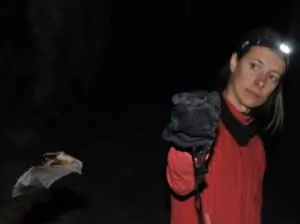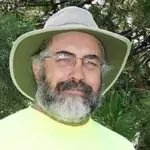

Anecdotes on stormwater design, management, and regulation by a non-engineer
The purpose of this series is to present case studies and general thoughts on stormwater. When possible, I want to share interesting examples that may offer opportunities to challenge existing paradigms and spark discussion. As an ecologist/toxicologist, I have very much enjoyed this now 20+ year foray into what is often an engineer’s wheelhouse. My hope is that I can offer a different angle on stormwater, as we seem to be increasingly affected by high storm intensities and more stringent regulations across the country.
A Little Historical Context…
Stormwater has, and continues to be, largely the purview of engineers. Engineered designs for managing stormwater have existed for thousands of years and can be seen in both the “ancient” old (Mesopotamia) and new (Mayan and Aztec) world. Designs were empirical and began out of necessity for safety and to protect land uses, such as residences and agriculture. In modern times, empirical observations have been converted into modeling tools to simplify the process greatly.
These days, stormwater issues are getting more complex. Heavy, widespread water pollution generally began in the mid-1800s with the Industrial Revolution but became a more obvious problem following World War II. The first major U.S. water quality law was enacted in 1948 and became much more prominent in 1972 as the Clean Water Act (CWA) we know today. The CWA addresses stormwater because it clearly has the potential to carry pollutants, particularly when it originates from large industrial sites.
More recently, we have become much more aware of the key role of long-term planning when it comes to stormwater. Trying to engineer your way out of a stormwater problem will likely be much more expensive than simply planning well and maintaining a properly designed system.
Although stormwater engineering was once simply about preventing stormwater from being destructive, it has now become at least as much about maintaining water quality. As pollutants become more prevalent in more confined and constrained systems, effects on human health and the environment are likely to be more pronounced, especially when existing ecosystem services are inadequate to mitigate impacts. Moreover, ecosystems expected to treat stormwater, such as wetlands and streams, are now likely protected themselves, and opportunities for “dilution being the solution to pollution,” while still a valid concept, are becoming rarer. Our ecosystems simply do not have the capacity to handle everything we are throwing at them.
That’s the context for this series: How we control and treat stormwater in the context of interesting observations and experiences. The intent is to share stories and thoughts to create conversation and reflection on stormwater played against the regulatory background.
Authors Note

I am an ecologist with a postdoctoral background in environmental toxicology and have been professionally engaged as a consultant in water quality issues since 1989. Recently I have become engaged in a number of legal discussions and disputes regarding water quality; in particular, industrial stormwater, and I continue to be interested by issues that come up during the course of a general stormwater practice.
I am a pragmatist: I have practiced long enough that I have left idealism behind. Idealistic approaches are valid as a theoretical baseline, but anything beyond that must have scientific or well-documented empirical support. Otherwise, idealism is just sort of adorable, if not misguided, and can lead to real problems.
As an ecologist, I respect our ecosystems as much as anyone. Our goal is to protect human health and the environment. Some parts of this series may appear to some that I’m “siding” with industry or other client concerns, but my intent is always to balance idealism against practical and scientific reality.
In summary: “The road to hell is often paved with good intentions.”
Let’s walk the road together and see what we can figure out.
Join SCS Engineers as a Platinum Sponsor at the 40th Annual Environmental Training Symposium & Conference, held in-person at the San Diego Convention Center. This conference includes 25 educational sessions on three tracks running simultaneously over two days, May 13th-14th. The conference hosts a robust Exhibit Hall, an Awards Luncheon, and a San Diego Bay Yacht Cruise. Panels will cover topics including air, hazardous materials, health & safety, sustainability, and water quality, with expert speakers from Southern California.
Register today!
Sensitive natural resources include but are not limited to the following: Threatened and Endangered (T&E) species and their habitats, wildlife refuges, wetlands, and tribal burial grounds. These are areas where federal or states have identified protected resources. SCS Engineers has the expertise and credentials to perform surveys for clients with projects requiring the identification of these sensitive resources, along with the regulatory permitting with specialization in threatened and endangered species, wetlands, and critical habitats.

Development and construction often occur near or within areas identified as sensitive natural resources. Responsible developers identify sensitive resources near or within their proposed project area as part of their development plans because protecting our nation’s natural resources is important. The protection of sensitive natural resources is the basis of the Federal Endangered Species Act, Clean Water Act, and National Historical Preservation Act. Projects under consideration in sensitive areas require special permits; without which projects can be shut down causing costly contractor delays and schedule disruptions. Post-permitting and the associated fines can be severe, so even if you are not a conservationist, it makes good sense to complete the permitting process before breaking ground.

When considering a project in potentially sensitive ecological areas, SCS Engineers recommends a constraint analysis be performed. The analysis will determine if the proposed project location is within wetlands, critical habitat, threatened and endangered species range, and other potential constraints. If it is, SCS recommends that a site assessment is performed and initiate agency consultation to protect the sensitive resources.
Both the permitting process and the preliminary ecological assessments are not difficult but do require credentialed specialists. SCS has geologists, hydrologist, hydro-geologists, and environmental compliance professionals nationwide. SCS Engineers even has credentialed biologists for specialized threatened and endangered species monitoring and assessments for several species that include but not limited to the American Bury Beetle, Arkansas Shiner, Arkansas Darter, Topeka Shiner, Neosho Mucket Mussel, Rabbitfoot Mussel, Northern Longear Bat, and Indiana Bat in the Central U.S.
To determine if a project is within a sensitive natural resource area or to schedule an ecological consultation, contact .
About the Author: Vaughn Weaver

In addition, he has 15 years of water quality experience with National Pollution Discharge and Emissions Systems (NPDES) for point source and non-point source permits. Vaughn is also a Certified Wetland Delineator – USACOE.
The Environmental Quality Council adopted the revised rules at a public hearing in Cheyenne, Wyoming, and the final rule was filed with the Wyoming Secretary of State on September 15, 2015.
• Chapter 8, Quality Standards for Wyoming Groundwaters;
• Chapter 13, Class I Hazardous Waste and Non-Hazardous Waste Wells Underground Injection Control Program;
• Chapter 16, Class V Injection Wells and Facilities Underground Injection Control Program;
• Chapter 27, Underground Injection Control Program.
Copies of the Water Quality Rules and Regulations are available electronically on the Wyoming Secretary of State website and professionals at SCS Engineers are available to help you with understanding compliance and your specific questions pertaining to how the rule adoption could impact your business.
Click to read about SCS Engineers.